Growing research into cosmetic ingredients has been raising safety concerns among consumers. Bárbara Pinho explores the future of safer chemistry amid the ‘clean beauty’ trend
- Growing concern over cosmetic ingredients: Consumers are increasingly aware of potentially harmful substances like PFAS, parabens and phthalates in personal care products. Studies have detected these chemicals in human tissues, raising concerns about long-term health effects, especially for vulnerable groups like pregnant women.
- Scientific uncertainty and ethical challenges: While some studies show associations between these chemicals and health issues (eg hypertension, breast cell changes), causality remains unproven. Ethical constraints limit direct testing, and many studies use animal models or unrealistic exposure levels, complicating risk assessments.
- Rise of the clean beauty movement: In response to consumer demand and regulatory pressure, brands are removing controversial ingredients – even when scientific evidence of harm is inconclusive. This has led to widespread reformulation, marketing shifts and the rise of ‘free-from’ labels, though these can sometimes be misleading.
- Industry challenges and data sharing: Replacing ingredients like parabens with safer alternatives is complex and can lead to ‘regrettable substitutions’. Initiatives like ChemForward aim to improve transparency and reduce duplication in safety assessments, helping brands make better-informed formulation choices.
This summary was generated by AI and checked by a human editor
Every day, millions of us apply some type of product to our bodies. From basic hand soap and shower gel to more elaborate cosmetics like retinoids and serums, these have all become an indispensable part of our daily routines. A recent survey in the US shows the average adult uses 12 personal care products a day – an increase from the nine products used in 2004. And as we apply more products, the question of what exactly is in them is being raised more often.
Terms like per- and polyfluoroalkyl substances (PFAS), silica and parabens are no longer confined to the realm of chemists’ jargon. Multiple surveys show that consumers are becoming increasingly aware not only of what’s in their beauty products, but also of whether these ingredients might be harmful. This concern stems from various factors: countries are setting regulatory limits on certain ingredients, raising awareness of their impact on human health. Social media has also fuelled a surge in conversations around the topic. And more studies are finding that these chemicals remain in people’s bodies for a long time.
‘A lot of these chemicals are really detectable in everybody,’ says Stephanie Eick, an epidemiologist from Emory University in the US. ‘That’s in studies from multiple different regions of the world, different age ranges, different demographic groups. Everybody has detectable levels of these compounds.’
The compounds Eick refers to include PFAS (often called ‘forever chemicals’), parabens, phthalates, phenols and many others. Cosmetic products often have complex formulations. Some ingredients, such as parabens, are commonly used, while others, like PFAS, appear less frequently. Multiple studies have detected traces of these substances in people’s blood, hair, urine and even breast milk. And so, given how extensively cosmetics are used, researchers hypothesise that some of these chemicals may be entering the body through these products.
‘Some studies have shown people who use scented body lotion and cosmetics have higher levels of parabens and phenols relative to women who use those products less frequently,’ Eick adds.
Active ingredients
Cosmetics have different ingredients for different purposes. UV filters, like avobenzone, absorb or reflect harmful UV rays, protecting the skin from photo-damage and wrinkling. PFAS give products such as mascara water-resistant properties, while preservatives, like parabens, have antimicrobial properties that protect products from yeast, bacteria and mould.
The regulatory status of these ingredients can change over time as new scientific assessments are performed. Lilial, for example, was once a pleasant and common ingredient in fragrances and household products but mounting evidence of its potential health risks led to its ban in the EU and UK.
PFAS are still under review in the EU, although countries like France and New Zealand are already taking individual action against them. Due to their resistance to breaking down, they can remain in the human body for extended periods. Exposure to certain types of PFAS has been linked to a range of health issues, which is why researchers and regulators are scrutinising their use in cosmetics. And then there’s the case of preservatives.
Parabens are by far one of the most scrutinised ingredients out there. Regulatory entities limit how much companies can add them to formulas, but that hasn’t stopped the public from having strong feelings against them.
Tricky parabens
When using a personal care product, we can expose the formula to multiple microorganisms: by opening the container, touching the lotion with our fingers, or when droplets of water fall into it. Preservatives hinder the growth and reproduction of these microorganisms and help increase a product’s shelf life, with parabens being some of the most efficient ones.
But despite their usefulness, several studies have found parabens to have hormone- or endocrine-disrupting activity. It started in the late 1990s, when research led by British molecular endocrinologist Edwin Routledge showed that parabens could have an oestrogenic effect. Then in 2004, researchers found parabens in the tissue of breast tumours. This sparked concerns that there could be an association between parabens and breast cancer, although no strong causality has been found in the meantime.
Eick has conducted her own research on these preservatives. In a recent study, she examined how parabens and phenols are connected to maternal blood pressure and hypertension during pregnancy. In the study, her team measured the blood pressure of 1433 pregnant women in Puerto Rico during two visits: one early in the pregnancy and another later on. They also collected urine samples at both visits and analysed them for 12 types of phenols and parabens. The results showed that exposure to these chemicals, both individually and in combination, was associated with an increased incidence of hypertension during pregnancy, particularly in the later stages.
The study included only two visits and therefore collected a modest amount of data per participant. The question of whether the ingredients directly cause hypertension also remains open. The researchers observed an association, not a causal relationship, meaning they cannot say with certainty that phenols and parabens lead to hypertension.
They also did not assess whether exposure came specifically from cosmetic products. Still, Eick is confident that beauty and hygiene products are a likely source, given how commonly these are used. She also believes the findings help us to see the bigger picture.
‘Within this cohort, we’ve seen [in other studies] that these phenol and paraben exposures are also associated with adverse pregnancy outcomes, things like preterm birth and low birth weight,’ Eick explains. ‘And so now that we’re seeing that these exposures are also linked to pregnancy complications, this could indicate that this is one pathway — ultimately leading to an adverse birth outcome.’
Potential health effects
To determine whether a chemical in a cosmetic product might harm its consumer, scientists would ideally add that specific ingredient to a participant’s routine and then monitor the effects. However, intentionally exposing people to substances suspected of causing harm raises ethical concerns.
A more responsible approach could be to reverse the process: remove products with the ingredient you’re studying, and which participants use voluntarily, and then observe the changes. This method provides important insights, especially when dealing with chemicals like parabens and phthalates, which are already present in most people’s daily routines.
This is exactly the approach taken by Shanaz Dairkee, a cancer researcher at the California Pacific Medical Center in the US. She recently published a study exploring the connection between parabens and phthalates in cosmetics and the onset of breast cancer. Dairkee worked with an organisation in San Francisco that helped her team recruit healthy, premenopausal female participants. They asked what products participants were using daily and those who used at least one paraben-containing product were selected, resulting in a group of 41. Dairkee’s team then split the group into two: one group continued using their usual products, while the other received a kit of products free of parabens, phthalates and fragrance. The participants were instructed to exclusively use these products for 28 days (the duration of the study).
They called this a “Reduced XE” exposure intervention, or Reduxe, with XE standing for xenoestrogens, endocrine-disrupting chemicals that mimic natural oestrogens. Parabens and phthalates are xenoestrogens, and Dairkee wanted to see if reducing exposure would lead to changes in breast cells. ‘Our Reduxe intervention focused on identifying potentially early molecular changes,’ she explains.
Scientists collected breast tissue, urine and blood samples from each participant on day one and day 28 of the intervention. These samples helped researchers build a clear picture of exposure levels before and after participants received the Reduxe kit.
Healthy breast cells are exquisitely sensitive to levels of xenoestrogenic intake
The results showed that levels of xenoestrogens in participants who had received the kit were lower than in those who continued using their usual products. Dairkee also observed changes in cellular processes. Gene activity that can promote cancer was dialled down in the breast cells of those who used the study’s kit. In particular, the Reduxe intervention affected cell signalling pathways that play important roles in cancer development.
‘Healthy breast cells of premenopausal women are exquisitely sensitive to levels of xenoestrogenic intake,’ Dairkee says. She explains that just 28 days of reduced exposure to xenoestrogens via cosmetics meant a more ‘normalised’ cellular profile. ‘These results were astonishing.’
Dairkee’s results focus solely on cellular processes and not on clinical outcomes. Her paper does not suggest that having parabens, phthalates and fragrance in personal care products means consumers are more likely to have cancer. But it does add to the growing body of literature questioning whether exposure to products containing these ingredients could be harmful to consumers’ health.
Just how much risk is there?
There is still a lot of vagueness when it comes to quantifying just how much risk – if any – some of these ingredients pose in terms of harming people. When evidence is clear, ingredients get banned or more strictly controlled, as has happened with substances like Lilial and zinc pyrithione, which are banned in the EU and the UK. It’s when evidence remains inconclusive that the challenge persists.
In toxicology, it’s important to clearly understand what risk means before drawing conclusions. Risk is a product of exposure and hazard. This means that if there is no exposure, even if a substance has a very high hazard level, the risk of it causing harm is very low.
When it comes to cosmetic products, it’s important that both dimensions – exposure and hazard level – are taken into account to produce clear risk assessments. For example, water has a low hazard level, but too much exposure to it can be pose a big health risk: we drown.
Many of the studies on parabens have been performed in mice and cell lines. Researchers also tend to feed mice parabens rather than apply them to the skin, and often in quantities that do not mimic human exposure to cosmetics. Therefore, as the aspect of exposure in these studies isn’t accurate to human models, we can’t pinpoint exactly how parabens would affect the human body at large, based on the existing literature.
And so, one key question emerges: do we wait for more research and clearer figures on risk, or should we change our beauty routines right away to exclude these ingredients? Despite it being a complicated question, the beauty industry seems to already have an answer of its own and has been quick to put it into action.
The clean beauty movement
Tyra Callaway is a formulation chemist at Paragon Nordic in Sweden. She works in a team that develops a wide range of personal care products, including suncare, skincare and haircare, which are sold under various brand names across the Nordic countries and EU. ‘About every adult in the Nordics uses our products,’ she says.
But Callaway’s role extends beyond the lab: she also has a sales-facing position, meaning she meets directly with brands to understand their desired formulas. From these conversations, as well as her own knowledge of the market, she sees inevitable trends. ‘Sometimes, people want claims like “no chemicals”, and that, obviously, I can’t help with. But there are a lot of things, like ingredients, that consumers are more aware of.’
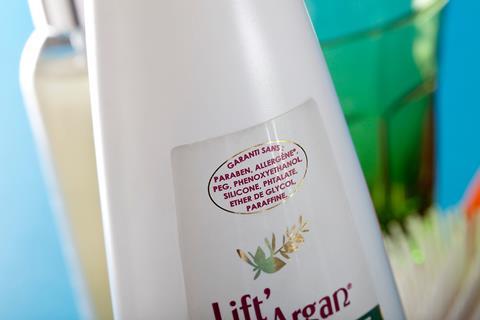
She explains that audiences today have a clear preference for products without parabens, PFAS, phthalates or some types of silicones (such as cyclopentasiloxane). She adds that market perception is the reason why certain ingredients, such as parabens and some silicones, are rejected. PFAS and certain phthalates, on the other hand, are not really considered in her formulations due to regulatory pressure. Callaway even described some of these ingredients as unmarketable, given how strongly her brand clients reject having them in their formulas.
‘It’s just such a large discussion if you were to try to include a paraben in a formula, so for me, it’s not worth that. It’s not worth the time to actually discuss it,’ she says. She goes on to explain that she would rather invest time and money into testing alternative preservatives, as they are less problematic in the public eye. ‘While parabens may still be found in older, grandfathered formulas, I personally do not choose to use them in new development work.’
This phenomenon of gradually removing traditional ingredients from cosmetics — despite a lack of evidence showing they are toxic in typical human exposure — has become a hallmark of the clean beauty movement. This ongoing trend involves brands aiming to eliminate substances consumers perceive as ‘dirty’. The term is criticised by many in the field for being poorly regulated and for creating unnecessary stigma around standard cosmetic products. Nevertheless, it has spread widely.
The hashtag ‘clean beauty’ has been used in more than seven million public posts on the social media site Instagram. Retailers including Target and Sephora have clean beauty aisles where parabens, along with other ingredients like cyclic silicones, are completely forbidden. If a brand wants its product to be more widely stocked in these stores and featured in those aisles, its formulas must comply and be free from dozens of ingredients. Labels such as ‘eco’, ‘natural’, and ‘bio’ are also growing in popularity. Customers are led to believe that these products are healthier, but in reality, these terms are largely unregulated. There is also no guarantee that these often more expensive products contain lower concentrations of ingredients considered harmful by the public.
For example, in a recent study scientists found that products labelled as ‘green’, ‘natural’, or ‘bio’ contained parabens just like conventional ones. The study noted that straightforward labels such as ‘paraben-free’ tended to be more accurate – although even those can be misleading to the untrained eye.
For example, nail polish can sometimes be advertised as ‘preservative-free’. However, such products often contain a high proportion of alcohol and therefore do not require a preservative. This makes the claim misleading and leads consumers to assume that they are getting a better deal when they are not.
Swapping ingredients
Formulation chemists are increasingly dealing with long ‘free-of lists’. To meet their clients’ demands, they have to study alternatives and work towards finding replacements for ingredients that are considered problematic by the market. Swapping one ingredient for another that’s deemed safer by audiences is becoming more common in the industry. It is, nevertheless, a long process. When companies need to profile an ingredient before adding it to a new formula, they typically do so privately. They might hire a toxicology firm to assess a single chemical, and the resulting data remains confidential. Then, another organisation interested in using the same chemical may commission the same assessment, only to keep those results private as well.
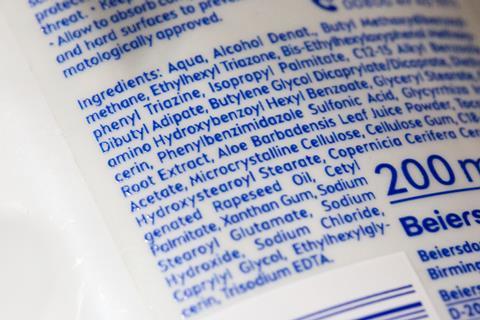
This is where ChemForward, a non-profit that helps companies keep track of the hazard level of chemical ingredients, steps in. The organisation wants to reduce duplication of effort and encourage the sharing of data from assessments. ‘I very much believe in data sharing and how we can continue to make progress over time if we’re not reinventing the wheel every time when it comes to chemical hazard assessments,’ says Heather McKenney, science and safer chemistry lead at ChemForward.
This data-sharing model seeks to address an issue that arises when an ingredient is banned: regrettable substitutions. These happen when a compound is replaced with another without a broad understanding of the new ingredient. For example, over the past few years, in a rush to ditch parabens due to public outcry, companies started using other preservatives, only to then have to recall the products from shelves following the appearance of mould, yeast and bacteria. Clean beauty company Beautycounter (now rebranded to Counter) voluntarily recalled a paraben-free brow gel in 2020 because testing had found the mould Penicillium.
‘The situation of regrettable substitutions is of concern, not only for consumers, but there’s a business risk there as well,’ McKenney adds.
What should consumers do?
With hundreds of ingredients on the market, new formulas emerging regularly, and ongoing research uncovering the many intricacies of each component, finding clear and definitive guidance is a challenge.
Some ingredients are undoubtedly still beneficial, and current health research doesn’t show that they’re harmful to humans in typical cosmetic use. At the same time, people who are concerned about exposure have every right to be, and they should be able to choose products that are free of the ingredients they’re worried about.
To those concerned, health researchers like Eick advocate for fragrance-free, paraben-free and phthalate-free products. She explains that she personally prefers to minimise her exposure to these ingredients and avoid any potential health effects. But for less informed consumers, misleading labels and marketing tactics can distort perceptions and influence choices. And with ‘clean beauty’ now so widespread, it feels as though the verdict has already been delivered in a court of public opinion – where some ingredients are guilty until proven innocent.
Bárbara Pinho is a science writer based in Porto, Portugal
References
Additional information










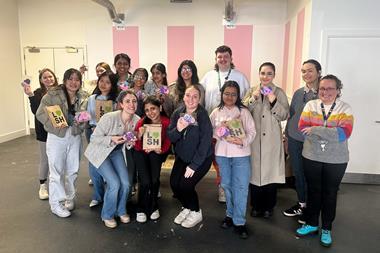
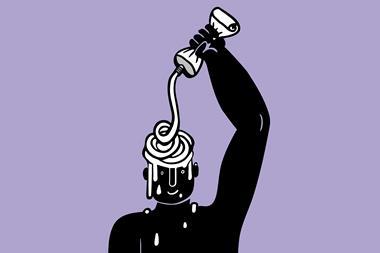
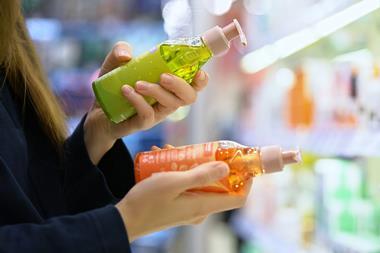
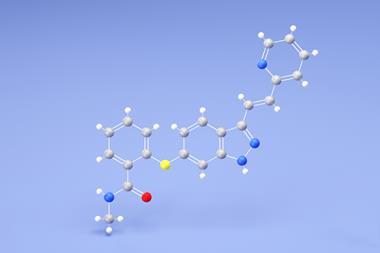




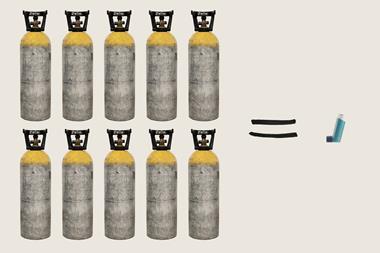
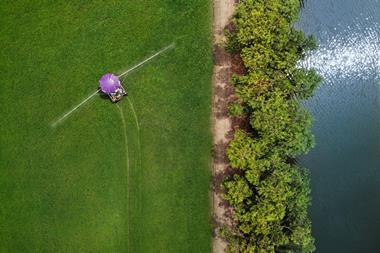
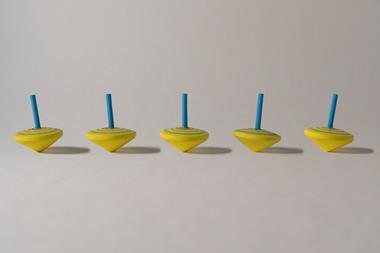
No comments yet